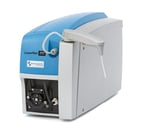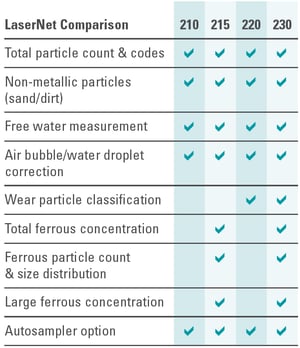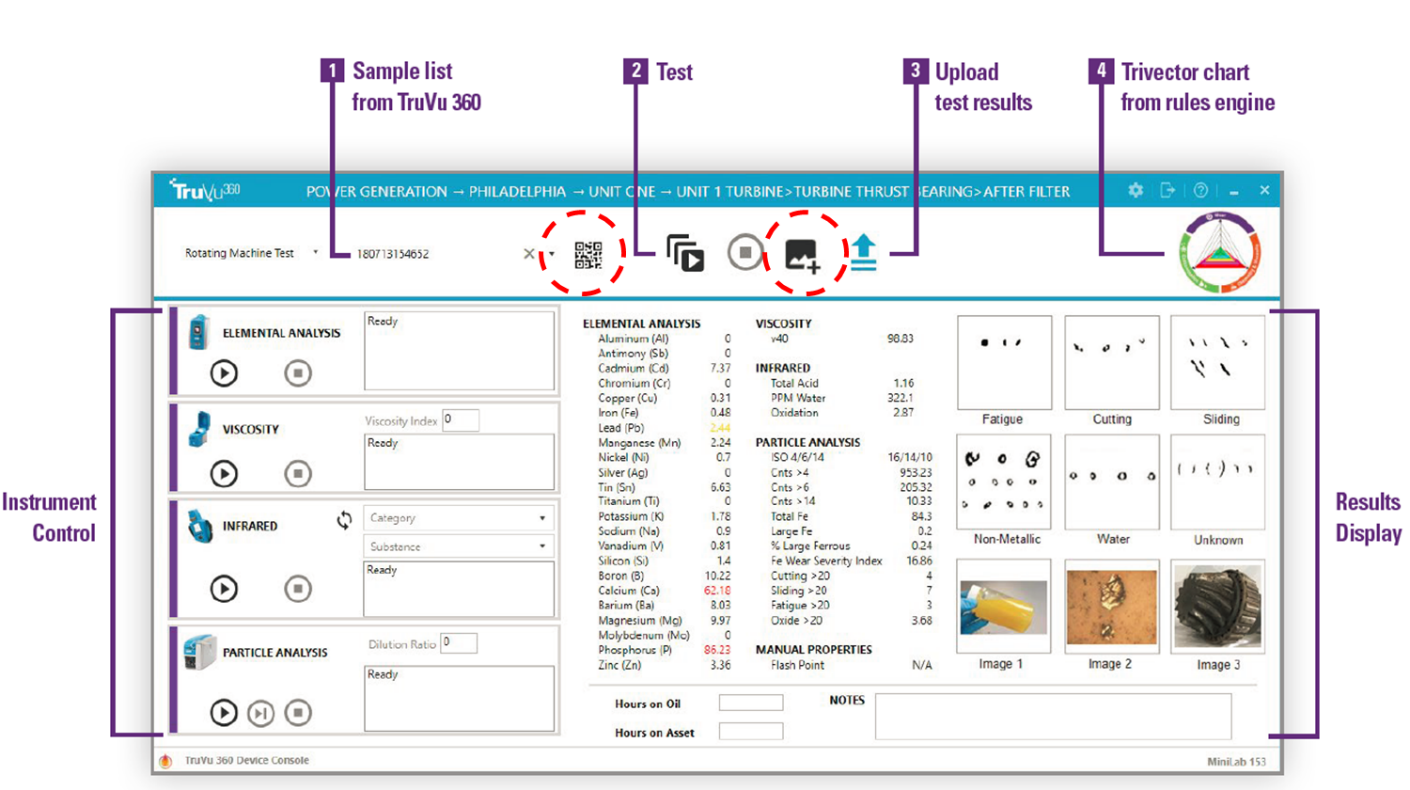The Beginner's Guide to Trending Parameters for Machinery Wear on the LaserNet 200 Series

Establishing alarm limits and condemnation levels for large machinery wear particles is a common topic discussed among reliability professionals. Equipment manufacturers are often not forthcoming with this information since each piece of equipment potentially generates wear at a different rate. Trending and monitoring deviations from trends is the recommended way for developing alarm limits and condemnation levels on the component. As part of the MiniLab system, the LaserNet 200 Series is a powerful tool to trend particle counts, classify wear particles and monitor ferrous debris levels.
 Without any formal recommendations from the manufacturer, it can be challenging to determine which parameters are best suited for monitoring changes in wear conditions. Fortunately, monitoring a few parameters on the LaserNet 200 Series can help us focus our data analysis and dictate when we need to take a more detailed view of the wear conditions. In most cases, trending just a few parameters can be extremely helpful in determining abnormal wear conditions. Depending on the series you are using, you may or may not have all of these parameters available, but here are my recommendations when using the LaserNet 230:
Without any formal recommendations from the manufacturer, it can be challenging to determine which parameters are best suited for monitoring changes in wear conditions. Fortunately, monitoring a few parameters on the LaserNet 200 Series can help us focus our data analysis and dictate when we need to take a more detailed view of the wear conditions. In most cases, trending just a few parameters can be extremely helpful in determining abnormal wear conditions. Depending on the series you are using, you may or may not have all of these parameters available, but here are my recommendations when using the LaserNet 230:
- ISO Particle Count 4u/6u/14u and ISO CODE 4u/6u/14u: Did you know that 82% of machine failures are particle-induced? That means if you control the cleanliness of your fluid, you are likely attacking machine failure rate at the root cause. Monitoring particle counts indicate if the newly delivered oil is clean, filtration techniques are effective and can even help determine if there is a varnish problem.
- Non-Metallics > 20u: Non-metallics typically are an indication of dirt, fibers or Silica in the oil. If using a SpectrOil, its likely Si or Na will spike if this number spikes (but not always). Reviewing the images can help determine if fibers or dirt are present.
- Total Ferrous: This is predominantly comprised of very fine dissolved ferrous material in the sample. As long as the wear rate is normal it should increase linearly with time. It will return to zero or be reduced when oil is changed or topped up. Corrosive wear is very sensitive to this measurement. Signs of a dominant corrosive wear mechanism vs normal abrasion between wear surfaces would be a faster increasing Total Ferrous ppm measurement.
- Large Ferrous: The signals from the small magnetometer coil set which comprise the large ferrous particle counts (Fe>25 u) are converted to report a single Large Ferrous parameter in addition to the individual counts. This ‘Large Ferrous” parameter is a calibrated ppm measurement of all Ferrous particles > 25um. When combined with the Total Ferrous measurement, this can be an extremely helpful parameter in helping determine if severe wear is present. Using the Large Ferrous parameter with a few simple rules can help us determine the type of wear present. For example:
- If no Large Ferrous particles are detected, but Total Ferrous is found than its likely Normal Rubbing wear is present.
- On the contrary, if Large Ferrous wear is greater than Total Ferrous, this is likely an early indication of severe wear. It is important to remember that Large Ferrous particles contribute very little to the overall rise in Total Ferrous.
- Percent Large Ferrous Particles (PLFP): As percent large ferrous rises, this is an indication larger particles are starting to form. At this point, investigate the wear images to determine what kind of wear is being generated. Percentage large ferrous particle (Large Fe/Total Fe)
- Ferrous Wear Severity (FWSI): Ferrous Wear Severity Index (Large Fe * Total Fe) is another important parameter to trend. The wear severity index will increase along with PLFP. As wear levels become more severe, this number will increase more drastically due to an increase in Large Fe.
Once deviations from the trend are noticed, it is critical to make realistic and actionable recommendations from the data. Viewing the images in the LaserNet 200 Series software or utilizing a microscope are two common ways to reassure the numerical data is accurate. Here are some general diagnostic statements that can be used as you look for trends in your parameters:
Oil Change Recommended – Total Ferrous is increasing and PLFP remains low or constant. No abnormal wear is present; the oil just needs to be changed due to buildup of excessive ferrous content.
Sliding/Abnormal Wear Mode – Total Ferrous and PLFP increase simultaneously. Sign of a severe wear mode. Investigate sliding wear images and data to determine wear mode.
Rolling Contact Fatigue – Total Ferrous remains low/unchanged over time, but PLFP approaches 100%. This can happen with ball bearings, rolling elements and gears. In these cases, we can have sub-surface fatigue cracks that suddenly open and generate large particles. Investigate fatigue wear images and data.
As an organization, we’ve recognized the challenges that come with managing a powerful tool like the LaserNet 200 Series. We’ve tackled this challenge in a couple of ways to make the data more manageable and accessible. First, the Adaptive Rules Engine feature in TruVu 360 contains 31 different component types with alarm limits and wear parameters already chosen and recommended for that specific component type. Secondly, we understand that pictures often help reassure the numerical values we are seeing; therefore, the LaserNet 200 Series images are included directly on the TruVu 360 Device Console (TDC) interface of TruVu 360 software. While parameters and alarm limits can be added or changed in TruVu 360, the user can use what is already set as the factory recommendations making the data more manageable and accessible.

Please let me know if you have any questions about how to optimize your use of the LaserNet 200 Series by pairing with other technologies such as a T2FM Microscope, FerroCheck or SpectrOil Elemental Spectrometer.
References:
LaserNet 200 Series Product Sheet
ASTM D7669 Standard Guide for Practical Lubricant Condition Data Trend Analysis


